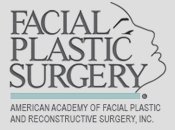Posted October 24, 2025 in Face Lift, Sculptra

The internet has opinions about mixing Sculptra® with future facelift plans, and they can be confusing to navigate. You’ll find surgeons who swear it causes complications and injectors who insist it’s perfectly fine. Both camps share partial truths while missing the complete picture.
Here’s what you need to know: the relationship between Sculptra® and future surgery isn’t black and white. Your outcome depends on who does your injections, how they do them, and who performs your eventual surgery. Let’s sort through the noise together.
Table of Contents
- What Is Sculptra®?
- Don’t Use Sculptra® Before a Facelift: Fact or Myth?
- Is It Safe to Get Sculptra® Before a Facelift?
- Can I Get Sculptra® After a Facelift?
- Are There Other Treatments That May Affect a Future Facelift?
- Learn More About Sculptra® in Encino
What Is Sculptra®?
Sculptra® isn’t your standard filler. Unlike traditional fillers that simply add volume, Sculptra® stimulates your body’s collagen production over several months in a bio-regenerative fashion. The poly-L-lactic acid (PLLA) particles are natural sugar molecules that work beneath the surface, prompting your body to rebuild its own support structure. It is the same material that has been used for decades in absorbable sutures.
It was first FDA-approved in 2004 for cosmetic use, and since then, it’s become a go-to treatment for patients who want something long-lasting without jumping into surgery too soon.
Sculptra® is for you if:
- Your face has lost volume, but you want gradual, subtle results
- You prefer looking naturally refreshed rather than “done”
- You’re between 30 and 65 with good skin elasticity
- You want results that build over time and last two years or more
- You’d rather stimulate your body’s own collagen than rely solely on synthetic fillers
Don’t Use Sculptra® Before a Facelift: Fact or Myth?
While opinions are divided on the matter, this is ultimately a myth. It’s true, injectables can make the underlying facial tissues more challenging to work with in some cases, but it all depends on the skill of your provider. Responsibly administered Sculptra® by an expert physician can actually improve your facelift results when timed correctly. The collagen stimulation creates thicker, healthier skin that surgeons often find easier to work with. The problem arises when inexperienced injectors treat Sculptra® like any other filler, placing it too superficially or using excessive amounts in areas where surgeons need clean tissue planes.
Dr. Michael Persky is an expert surgeon injector who knows facial anatomy inside and out. As a double board-certified facial plastic surgeon, he understands and respects both the art and science of facial aesthetics. He is able to place Sculptra® deep enough to avoid interference while still achieving beautiful results. Dr. Persky has performed numerous facelifts on his own patients whom he injected previously. The surgeries all went well, though in some cases the surgery may have taken 10 to 15 minutes longer to complete.
Is It Safe to Get Sculptra® Before a Facelift?
Absolutely, when you follow smart protocols. The magic lies in choosing an injector who views your face as a long-term project, not a quick fix. During your Sculptra® consultation, Dr. Persky will ask about your future surgical plans and adjust his technique accordingly. Depth of injection becomes paramount. So does moderation and restraint. The temptation to overcorrect with any injectable can create issues later, but Dr. Persky is a skilled provider who resists this urge.
It’s recommended to wait at least six months between your last Sculptra® treatment and your facelift. This interval allows the collagen remodeling process to stabilize. Some patients may prefer longer gaps, up to a year, though this conservative approach isn’t always necessary.
Can I Get Sculptra® After a Facelift?
Yes, and many patients find this combination particularly powerful. Once you’re fully healed from surgery, usually after three to six months, Sculptra® can accentuate and optimize your new contours. Your facelift addresses sagging and repositions tissues, while Sculptra® continues to support skin quality and subtle volume restoration. Using Sculptra® after facelift surgery complements the results and often eliminates the need for revision secondary surgeries.
This partnership between surgery and injectables represents modern facial rejuvenation at its finest. You’re not choosing between options anymore. The facelift provides structural correction while Sculptra® maintains and refines those improvements over time.
Are There Other Treatments That May Affect a Future Facelift?
Dr. Persky is often asked about other “collagen” stimulating procedures and whether they will affect future facelifts.
Hyperdilute RADIESSE® with platelet-rich plasma is used to stimulate collagen in the face and neck. Ultherapy® is used to lift and tighten the skin and muscles of the face and neck. Like Sculptra®, both of these treatments, when performed properly by an expert physician, do not preclude future facelift and/or neck lift surgery.
Learn More About Sculptra® in Encino
Double board-certified facial plastic surgeon Dr. Michael Persky offers guidance that addresses both your immediate goals and your long-term vision for facial rejuvenation. Our practice specializes in creating natural results through both non-surgical treatments like Sculptra® and surgical procedures, viewing them as complementary tools in your aesthetic toolkit.
If you’re considering Sculptra® or planning for a future facelift, we’d love to guide you through the process. Call us today at (818) 501-3223 or fill out our online contact form to schedule your consultation in Encino, CA.




